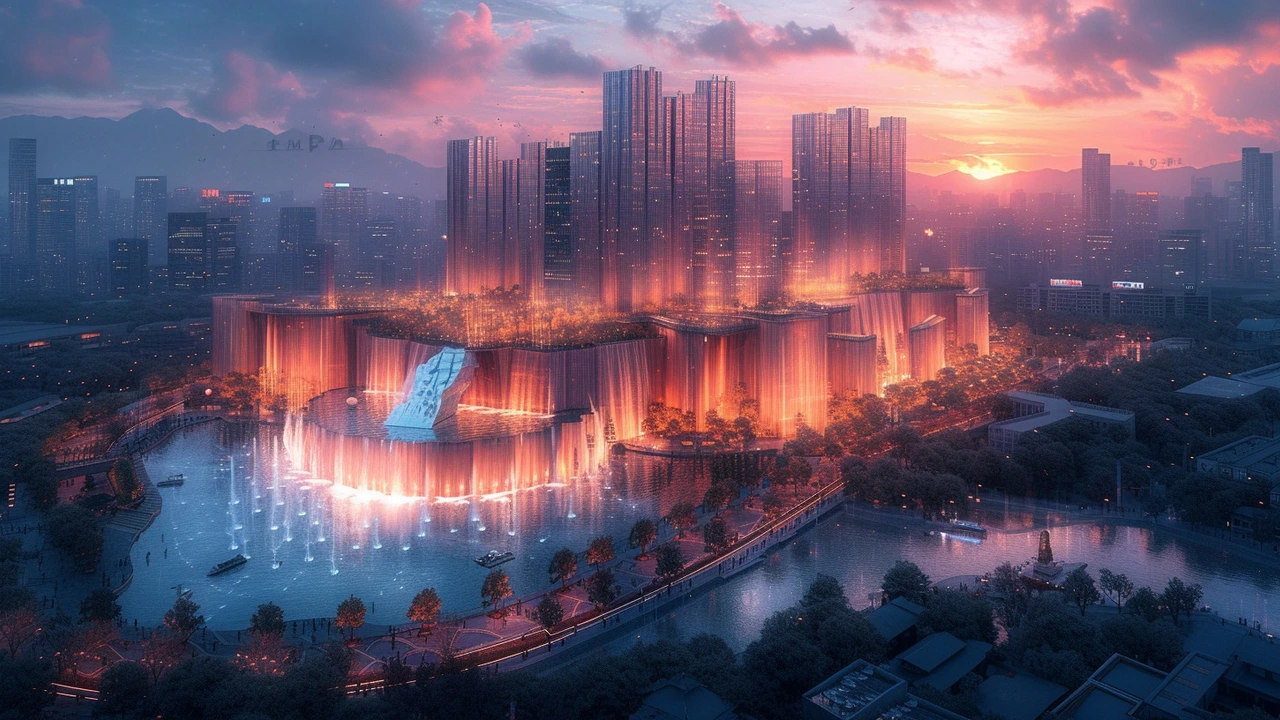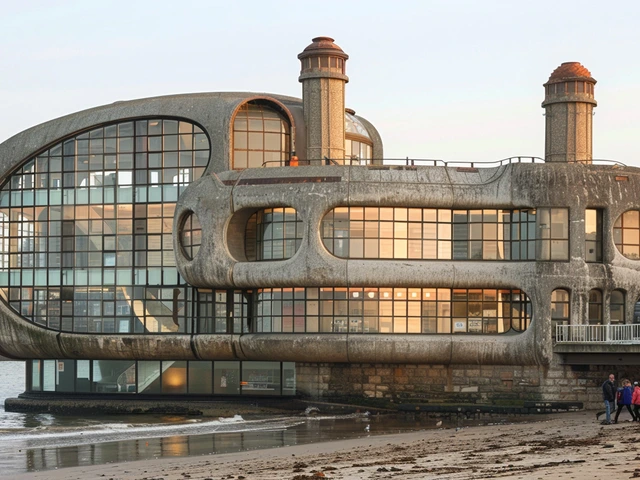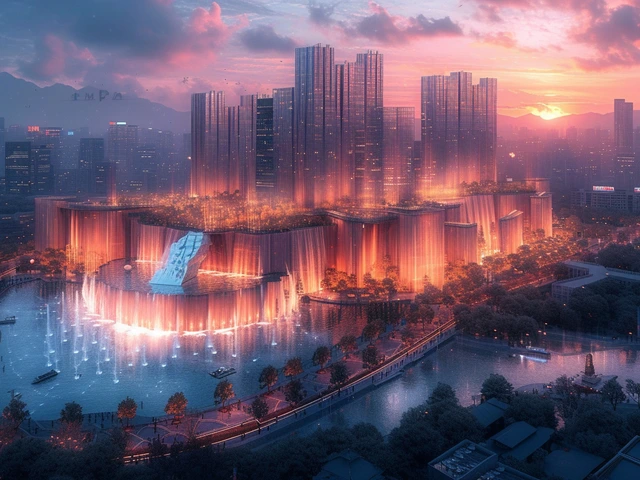Exploring the Roots of Constructivist Architecture
Let me take you on a bit of a time travel adventure—back to the emergence of Constructivist Architecture. No DeLorean required, folks! This story begins in the early 20th century, when Russia was all abuzz with the ideas of Constructivism, emanating from the artistic and architectural whirlpool of the Russian Avant-Garde. A time when architects were not just architects; they were revolutionaries with rulers and pencils! They had this utopian vision of a new societal order, and they believed buildings could be the scaffolding for social change. Oh, and these folks were all for technology and industry, which pretty much made them the cool kids of their era, setting the stage for modern architecture to boogie its way into the future.
Tossing aside the old, ornate way of doing things, these brave souls embarked on an exciting journey, heralded by none other than Vladimir Tatlin. Remember his Monument to the Third International? That was like the poster child for Constructivism: bold, unapologetic, and like nothing anyone had seen before. Full disclosure, while it didn't quite get built (real estate issues maybe?), it did set off a spark in the minds of architects who rushed to incorporate innovation and function into their designs. Think less about those filigree-infested facades and more about dynamic angles and exposed structures that made form follow function—quite literally!
Introducing Constructivism to the World Stage
Constructivism didn't just stay put in post-revolutionary Russia; it packed its bags and ventured out into the world. Mind you, the West was just starting to embrace the whims of Modernism about the same time. The Bauhaus was already a thing and Le Corbusier was starting to question whether a house was a machine for living. Constructivism slid right into this narrative, but with a little extra pizzazz. It was bold, it was experimental, and it certainly wasn't shy about showing off those industrial materials. Concrete, glass, steel—I like to think that if Constructivism were a person, it'd be the type to wear sunglasses indoors, just because.
But how did Constructivism carve out its niche? Well, it traveled across Europe, crossed the Atlantic, and before you knew it, it had seduced architects from all over with its no-nonsense, utilitarian yet aesthetically ambitious character. Like an avant-garde artist turned globe-trotting influencer, Constructivism had fans from London to Chicago, and its principles started influencing designs from skyscrapers to schools. Even today, you can see echos of its influence whistling through the corridors of contemporary architecture, humming a tune of innovation and boldness. But enough about the past—let's see how it’s reflecting in today's landscapes!
The Resurgence of Constructivist Principles in Contemporary Design
Fast forward to our shiny 21st century, and what do we see? A resurgence of Constructivist principles you can spot from a drone's eye view. Today's architects, with their caffeinated optimism, are rediscovering the joys of functional, stripped-down designs that boast a raw appeal. And why not? In an age where we're all about sustainable materials and environmental responsibility, the "form follows function" mantra fits like a glove—no, not like Thanos' glove though; it's far less apocalyptic, more eco-chic.
So, here we are, amidst a renaissance of architectural innovativeness, where buildings are not just shells but canvases for showcasing technological prowess and societal narratives. These modern-day buildings aren't just places to hang your hat; they're sculptural entities that engage with their surroundings, often blurring the lines between the inside and outside. Gosh, it's like breaking the fourth wall, but for buildings! This isn't just a walk back into the past; it's more like the past and the present doing the tango, both leading at different times, creating something refreshingly new yet nostalgically familiar.
The Aesthetic of Functionalism Reigns Supreme
Why, hello, lovely functionality, we meet again! Constructivist Architecture was like the original Marie Kondo of the design world—it sparked joy by keeping things simple and meaningful. And seriously, in our super cluttered lives, who wouldn't yearn for a bit of that aesthetic calm? These designers were the original minimalists before it was cool, crafting an aesthetic that was not only beautiful but immensely practical. Their designs demanded that every beam, every pipe, and every corner had a reason to be—no frivolous frills or unnecessary knick-knacks, thank you very much!
The beauty of functionalism is that it does double duty; it serves its purpose while looking good doing it. This is architecture that's not about bells and whistles—it’s about the harmony of form and function that sings a duet of efficiency and elegance. And here's a spicy nugget for you: this focus on unadorned practicality is more than just an architectural choice; it's a lifestyle statement. It's like saying, "Look at me, I'm so effortlessly sophisticated that I don't need fancy baubles to prove my worth." Eat your heart out, over-decorated McMansions!
Material Honesty: The Show and Tell of Architecture
It's time for a bit of "show and tell" in the world of architecture, with Constructivism leading the pack with its policy of material honesty. Gone are the days when materials played hide and seek under layers of paint and plaster. Constructivist principles champion the idea that a material should be true to its nature, showcasing its strengths and qualities without shame. Just like you wouldn't put a cat in a dog costume (trust me, Alfred would not approve), Constructivist architects wouldn't dress up concrete to look like wood. It's all about celebrating each material's unique texture, color, and structural potential.
This might sound a bit like material exhibitionism, but hear me out. There's something profoundly genuine about a building that reveals its bones, where reinforced concrete struts its stuff proudly and glass curtain walls gleam without pretense. They're not flaunting; they're honest. It's like a no-makeup selfie for buildings—what you see is what you get, and isn't there a certain beauty in that transparency? This approach not only creates an unpretentious architectural expression but also encourages innovation as designers push the capabilities of these materials to new, breathtaking heights.
The Socio-Political Echo in Modern Construction
Let's not forget that Constructivist architecture wasn't just about looking good; it had a voice—a socio-political baritone, if you will. It emerged from the tumultuous womb of post-revolutionary Russia, a time when everything was about expressing new social structures, technological progress, and the collective spirit. You could say Constructivism was the physical interpretation of a societal manifesto, etched in steel and concrete poetry. And that voice still echoes today, albeit in a different accent.
In our age, housing crises, ecological concerns, and the constant reshaping of our urban landscapes beg for design solutions that speak to these issues. Modern-day constructivist-inspired buildings seek to address these real-world problems with the same intent and urgency as their ideological forebears. These buildings are mindful of their social context, aiming to be more than just structures—they're community enhancers, eco-stewards, and urban connectors. The mantra now might be, "the medium is the message," with the materials and forms acting as mouthpieces for environmental sustainability and social inclusion.
Intersecting Art and Architecture
One thing that truly stands out about Constructivist Architecture is its hypnotic dance with art. This is architectural drama class at its finest—where structures tell stories, evoke emotions, and might as well be performance art pieces. They intersect with the realm of the sculptural, musical, and painterly, creating a sassy fusion that could just as easily belong in a museum as it does on a city block. It's like the architecture is saying, "Yes, I'm useful, but darling, I'm also divine to look at."
This synergy between disciplines is the soul of Constructivism, and contemporary design has eagerly adopted this passion for the artistic. Today's buildings aren't shy about flexing their muscles as public art installations. You've got skyscrapers that play with light and shadow like a canvas catching the changing hues of the day, and civic buildings that are as expressive as an opera singer hitting a high note. It's not just architecture; it’s an experience, molding emotions and thoughts through spatial poetry.
Embracing Innovation While Respecting Heritage
Last but definitely not least, modern Constructivist Architecture is navigating the tightrope walk of embracing innovation while showing a respectful nod to heritage. It's like a carefully curated Instagram feed, balancing throwback Thursday photos with futuristic filter experimentation. Architects today delve into the Constructivist toolkit, drawing out threads of the past to weave into forward-looking designs that aim for sustainability, adaptability, and technological integration.
We're seeing a beautiful marriage of history and progression, where the values of Constructivism are reinterpreted but never forgotten. Buildings are becoming smarter, more responsive to human needs, yet they carry with them the echo of Constructivist honesty and functionality. This isn't erasure; it's evolution. So what we have are spaces that are not anachronistic but rather innovative testaments to the enduring power of Constructivist ideals, adapted for a world in relentless flux.
And there you have it—the tale of how Constructivist Architecture is carving a niche in today's design landscape, whispered from generation to generation of architects, ensuring its principles resonate within the walls of modernity. It’s been a rollercoaster, friends, but who doesn't love a good thrill ride? Especially when it's lined with concrete, glass, and a whole lot of architectural passion. And remember, amidst these towering tales of design, even my dear Alfred, with his paws firmly on the ground, can sense the presence of Constructivist spirit—it's in the air, it's in the bones of our buildings, and it's definitely here to stay!





Leave a Comments